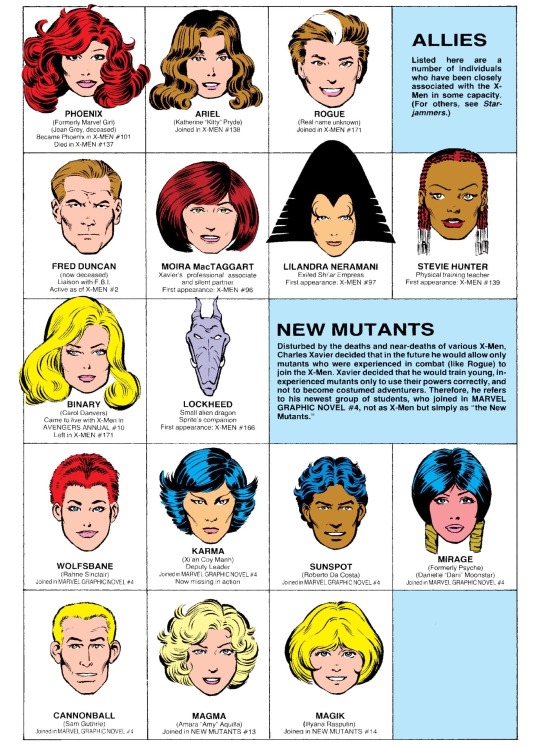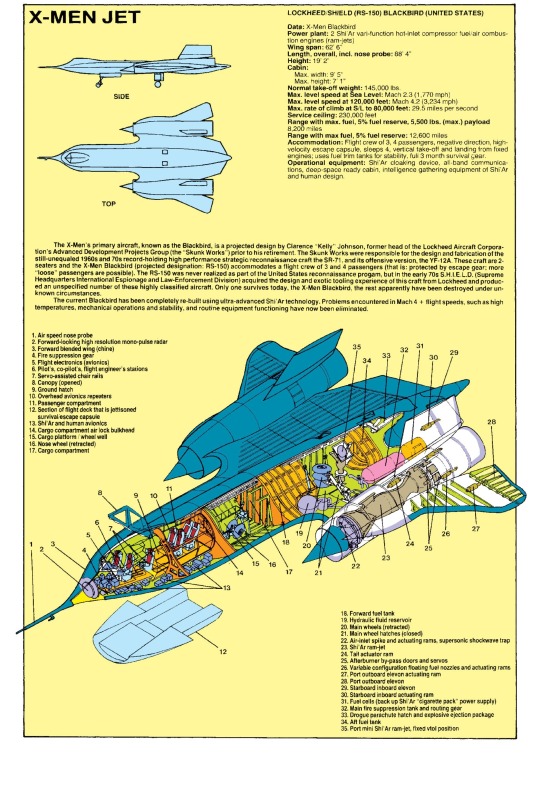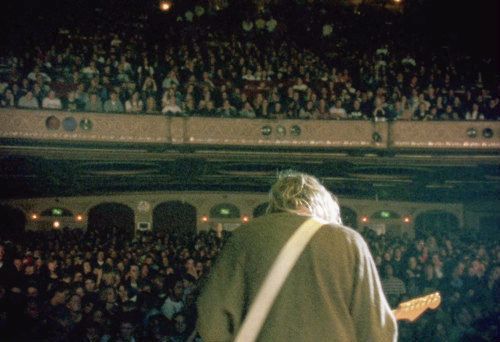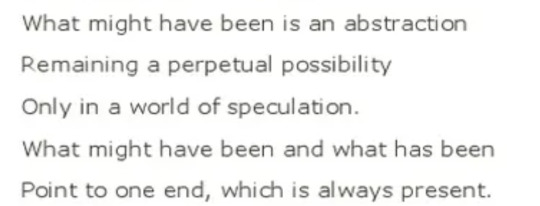#eliot smith
Explore tagged Tumblr posts
Text
if you’re looking for a mellow playlist with artists like:
Hozier
Jeff Buckley
Mazzy Star
Fiona Apple
Weyes Blood
Black Sabbath
Eliot Smith
Florence & The Machine
Lou Reed
PJ Harvey
Portishead
Radiohead
The Velvet Underground
#jay playlists#sad girl poetry#curating playlists is like my biggest hobby#i have too many playlists#i lose track of them!#chill music#the velvet underground#jeff buckley#mazzy star#weyes blood#radiohead#(i know red flag. idc they’re good)#portishead#lou reed#hozier#fiona apple#black sabbath#eliot smith#florence & the machine#pj harvey#Spotify
12 notes
·
View notes
Text

i found this on @socialist_nipple_piercing on instagram
i think this is so beautiful. it’s true acceptance from a real ally. someone who gets and loves queer people so fully even if he isn’t gay himself. i think every person person born into some form of privilege in our society (straight, male, white. etc) could learn a lot from elliot smiths experience.
0 notes
Text





The X-Men team profile from the original Official Handbook of the Marvel Universe. Compiled by Mark Gruenwald and Peter Sanderson with new artwork by Uncanny X-Men artist Paul Smith and the tech-y schematics by Eliot R. Brown.
There's a few mix-ups. Marvel Girl, Angel, Wolverine and Storm should be depicted in the costumes they were wearing when they joined the team and Kitty Pryde should also have a second listing under the alias Sprite. Arguably Multiple Man (who was working as Moira MacTaggert's assistant) could be included alongside the allies.
#Official Handbook of the Marvel Universe#OHotMU#X-Men#Mark Gruenwald#Peter Sanderson#Paul Smith#Eliot R. Brown#Professor X#Cyclops#Iceman#Archangel#Beast#Jean Grey#Mimic#Morph#Polaris#Havok#Nightcrawler#Wolverine#Banshee#Storm#Sunfire#Colossus#Thunderbird#Shadowcat#Rogue#Moira MacTaggert#Lilandra#Ms. Marvel#New Mutants
725 notes
·
View notes
Text















Leverage 3x11 - "The Rashomon Job"
One scene five ways
#christian kane#leverage#eliot spencer#sophie devereaux#gina bellman#riley smith#wes abernathy#the rashomon job#love that christian kane is losing his shit in 2 of 5
221 notes
·
View notes
Note
Can you name every cat breed
The naming of cats was a difficult matter until Robert Smith named them all Grey A. Midnight.
#the cure#all cats are grey after midnight#robert smith#ts eliot#old possum's book of practical cats#unreality
128 notes
·
View notes
Text
The poetry that inspired Jeff Buckley
Aimee Ferrier
Sun 1 October 2023 21:15, UK
Voices as incredible as the one belonging to Jeff Buckley don’t come around too often. Unfortunately, after releasing one record, Grace, Buckley, with all his potential, was taken away too soon. At the age of 30, the singer went for a swim from which he never returned, drowning in the Mississippi River.
Yet, his legacy lives on as one of the most influential artists to emerge from the 1990s, and his music is widely celebrated today for its emotional and lyrical complexity. Not only did Buckley possess an otherworldly voice, but he was also an extremely gifted guitar player and writer, with all his talents combining to create a masterful body of work.
Even when Buckley was covering other artists’ songs, such as ‘Lilac Wine’, ‘The Other Woman’ and ‘Hallelujah’, he imbued the pieces with his own distinctive style. Yet, his penchant for covers wasn’t a reflection of an aversion to writing. Buckley knew how to pen a stunningly poetic track, with songs like ‘Lover, You Should’ve Come Over’ and ‘Morning Theft’ suggesting that even if Buckley didn’t have the vocal pipes he was gifted with, he’d get by just fine as a writer.
Buckley took inspiration from many different writers and musicians when writing his own songs. Musically, Buckley looked back to folk artists like Leonard Cohen, Bob Dylan and, of course, his own father, Tim Buckley, from whom he was estranged. Elsewhere, he loved the work of Pakistani singer Nusrat Fateh Ali Khan, the rich tones of Nina Simone, and Led Zeppelin, calling Robert Plant “my man”.
However, when it came to his literary inspirations, Buckley had an extensive book collection, which he no doubt looked to for ideas when writing his lyrics. He owned a lot of poetry, with Rainer Maria Rilke proving to be a particular favourite. Not only did Buckley own Dunio Elegies, Rilke on Love and Other Difficulties: Translations and Considerations Poems from the Book of Hours, but he also owned his epistolary collection Letters to a Young Poet.
Buckley was also a fan of the classic American poet Walt Whitman, owning Leaves of Grass and From the Soil. Of course, no poetry collection is complete without copies of Arthur Rimbaud’s A Season in Hell and Illuminations, alongside some Charles Baudelaire – Buckley-owned Paris Spleen. The singer also owned the Selected Poems of confessional poet Anne Sexton and modernist writer T.S Eliot.
Check out Buckley’s complete poetry collection below.
The poetry that inspired Jeff Buckley:
Dunio Elegies – Rainer Maria Rilke
Poems from the Book of Hours – Rilke
Rilke on Love and Other Difficulties: Translations and Considerations – Rilke
Leaves of Grass – Walt Whitman
From This Soil – Whitman
The Odyssey – Homer
Early Work, 1970-1979 – Patti Smith
You Get So Alone at Times That it Just Makes Sense – Charles Bukowski
Selected Poems of Ezra Pound
The Complete Lyrics – Hank Williams
A Haiku Journey: Basho’s Narrow Road to a Far Province – Matsuo Basho
Paris Spleen – Charles Baudelaire
The Captain’s Verses – Pablo Neruda
Selected Poems – T.S. Eliot
A Season in Hell and Illuminations – Arthur Rimbaud
Writing and Drawings – Bob Dylan
Ode to Walt Whitman – Federico Garcia Lorca
New Poems: 1962 – Robert Graves
Fear of Dreaming: The Selected Poems – Jim Carroll
Selected Poems of Anne Sexton – Anne Sexton
Selected Poems – John Shaw Neilson
Selected Poems: Summer Knowledge – Demore Schwartz
The Collected Poems of Frank O’Hara – Frank O’Hara
Poems – Pier Paolo Pasolini
Space: And Other Poems – Eliot Katz
Tim Buckley Lyrics
#jeff buckley#jeffbuckley#The poetry that inspired Jeff Buckley#Amiee Ferrier#Dunio Elegies – Rainer Maria Rilke#Poems from the Book of Hours – Rilke#Rilke on Love and Other Difficulties: Translations and Considerations – Rilke#Leaves of Grass – Walt Whitman#From This Soil – Whitman#The Odyssey – Homer#Early Work#1970-1979 – Patti Smith#You Get So Alone at Times That it Just Makes Sense – Charles Bukowski#Selected Poems of Ezra Pound#The Complete Lyrics – Hank Williams#A Haiku Journey: Basho’s Narrow Road to a Far Province – Matsuo Basho#Paris Spleen – Charles Baudelaire#The Captain’s Verses – Pablo Neruda#Selected Poems – T.S. Eliot#A Season in Hell and Illuminations – Arthur Rimbaud#Writing and Drawings – Bob Dylan#Ode to Walt Whitman – Federico Garcia Lorca#New Poems: 1962 – Robert Graves#Fear of Dreaming: The Selected Poems – Jim Carroll#Selected Poems of Anne Sexton – Anne Sexton#Selected Poems – John Shaw Neilson#Selected Poems: Summer Knowledge – Demore Schwartz#The Collected Poems of Frank O’Hara – Frank O’Hara#Poems – Pier Paolo Pasolini#Space: And Other Poems – Eliot Katz
35 notes
·
View notes
Text
'Is Tom Ripley gay? For nearly 70 years, the answer has bedeviled readers of Patricia Highsmith’s 1955 thriller The Talented Mr. Ripley, the story of a diffident but ambitious young man who slides into and then brutally ends the life of a wealthy American expatriate, as well as the four sequels she produced fitfully over the following 36 years. It has challenged the directors — French, British, German, Italian, Canadian, American — who have tried to bring Ripley to the screen, including in the latest adaptation by Steven Zaillian, now on Netflix. And it appears even to have flummoxed Ripley’s creator, a lesbian with a complicated relationship to queer sexuality. In a 1988 interview, shortly before she undertook writing the final installment of the series, Ripley Under Water, Highsmith seemed determined to dismiss the possibility. “I don’t think Ripley is gay,” she said — “adamantly,” in the characterization of her interviewer. “He appreciates good looks in other men, that’s true. But he’s married in later books. I’m not saying he’s very strong in the sex department. But he makes it in bed with his wife.”
The question isn’t a minor one. Ripley’s killing of Dickie Greenleaf — the most complicated, and because it’s so murkily motivated, the most deeply rattling of the many murders the character eventually commits — has always felt intertwined with his sexuality. Does Tom kill Dickie because he wants to be Dickie, because he wants what Dickie has, because he loves Dickie, because he knows what Dickie thinks of him, or because he can’t bear the fact that Dickie doesn’t love him? Ordinarily, I’m not a big fan of completely ignoring authorial intent, and I’m inclined to let novelists have the last word on factual information about their own creations. But Highsmith, a cantankerous alcoholic misanthrope who was long past her best days when she made that statement, may have forgotten, or wanted to disown, her own initial portrait of Tom Ripley, which is — especially considering the time in which it was written — perfumed with unmistakable implication.
Consider the case that Highsmith puts forward in The Talented Mr. Ripley. Tom, a single man, lives a hand-to-mouth existence in New York with a male roommate who is, ahem, a window dresser. Before that, he lived with an older man with some money and a controlling streak, a sugar daddy he contemptuously describes as “an old maid”; Tom still has the key to his apartment. Most of his social circle — the names he tosses around when introducing himself to Dickie — are gay men. The aunt who raised him, he bitterly recalls, once said of him, “Sissy! He’s a sissy from the ground up. Just like his father!” Tom, who compulsively rehearses his public interactions and just as compulsively relives his public humiliations, recalls a particularly stinging moment when he was shamed by a friend for a practiced line he liked to use repeatedly at parties: “I can’t make up my mind whether I like men or women, so I’m thinking of giving them both up.” It has “always been good for a laugh, the way he delivered it,” he thinks, while admitting to himself that “there was a lot of truth in it.” Fortunately, Tom has another go-to party trick. Still nurturing vague fantasies of becoming an actor, he knows how to delight a small room with a set of monologues he’s contrived. All of his signature characters are, by the way, women.
This was an extremely specific set of ornamentations for a male character in 1955, a time when homosexuality was beginning to show up with some frequency in novels but almost always as a central problem, menace, or tragedy rather than an incidental characteristic. And it culminates in a gruesome scene that Zaillian’s Ripley replicates to the last detail in the second of its eight episodes: The moment when Dickie, the louche playboy whose luxe permanent-vacation life in the Italian coastal town of Atrani with his girlfriend, Marge, has been infiltrated by Tom, discovers Tom alone in his bedroom, imitating him while dressed in his clothes. It is, in both Highsmith’s and Zaillian’s tellings, as mortifying for Tom as being caught in drag, because essentially it is drag but drag without exaggeration or wit, drag that is simply suffused with a desire either to become or to possess the object of one’s envy and adoration. It repulses Dickie, who takes it as a sexual threat and warns Tom, “I’m not queer,” then adds, lashingly, “Marge thinks you are.” In the novel, Tom reacts by going pale. He hotly denies it but not before feeling faint. “Nobody had ever said it outright to him,” Highsmith writes, “not in this way.” Not a single gay reader in the mid-1950s would have failed to recognize this as the dread of being found out, quickly disguised as the indignity of being misunderstood.
And it seemed to frighten Highsmith herself. In the second novel, Ripley Under Ground, published 15 years later, she backed away from her conception of Tom, leaping several years forward and turning him into a soigné country gentleman living a placid, idyllic life in France with an oblivious wife. None of the sequels approach the cold, challenging terror of the first novel — a challenge that has been met in different ways, each appropriate to their era, by the three filmmakers who have taken on The Talented Mr. Ripley. Zaillian’s ice-cold, diamond-hard Ripley just happens to be the first to deliver a full and uncompromising depiction of one of the most unnerving characters in American crime fiction.
The first Ripley adaptation, René Clément’s French-language drama Purple Noon, is much beloved for its sun-saturated atmosphere of endless indolence and for the tone of alienated ennui that anticipated much of the decade to come; the movie was also a showcase for its Ripley, the preposterously sexy, maddeningly aloof Alain Delon. And therein lies the problem: A Ripley who is preposterously sexy is not a Ripley who has ever had to deal with soul-deep humiliation, and a Ripley who is maddeningly aloof is not going to be able to worm his way into anyone’s life. Purple Noon is not especially willing (or able — it was released in 1960) to explore Ripley’s possible homosexuality. Though the movie itself suggests that no man or woman could fail to find him alluring, what we get with Delon is, in a way, a less complex character type, a gorgeous and magnetic smooth criminal who, as if even France had to succumb to the hoariest dictates of the Hollywood Production Code, gets the punishment due to him by the closing credits. It’s delectable daylit noir, but nothing unsettling lingers.
Anthony Minghella’s The Talented Mr. Ripley, released in 1999, is far better; it couldn’t be more different from the current Ripley, but it’s a legitimate reading that proves that Highsmith’s novel is complex and elastic enough to accommodate wildly varying interpretations. A committed Matt Damon makes a startlingly fine Tom Ripley, ingratiating and appealing but always just slightly inept or needy or wrong; Jude Law — peak Jude Law — is such an effortless golden boy that he manages the necessary task of making Damon’s Tom seem a bit dim and dull; and acting-era Gwyneth Paltrow is a spirited and touchingly vulnerable Marge.
Minghella grapples with Tom’s sexual orientation in an intelligently progressive-circa-1999 way; he assumes that Highsmith would have made Tom overtly gay if the culture of 1955 had allowed it, and he runs all the way with the idea. He gives us a Tom Ripley who is clearly, if not in love with Dickie, wildly destabilized by his attraction to him. And in a giant departure from the novel, he elevates a character Highsmith had barely developed, Peter Smith-Kingsley (played by Jack Davenport) into a major one, a man with whom we’re given to understand that Ripley, with two murders behind him and now embarking on a comfortable and well-funded European life, has fallen in love. It doesn’t end well for either of them. A heartsick Tom eventually kills Peter, too, rather than risk discovery — it’s his third murder, one more than in the novel — and we’re meant to take this as the tragedy of his life: That, having come into the one identity that could have made him truly happy (gay man), he will always have to subsume it to the identity he chose in order to get there (murderer). This is nowhere that Highsmith ever would have gone — and that’s fine, since all of these movies are not transcriptions but interpretations. It’s as if Minghella, wandering around inside the palace of the novel, decided to open doors Highsmith had left closed to see what might be behind them. The result is the most touching and sympathetic of Ripleys — and, as a result, far from the most frightening.
Zaillian is not especially interested in courting our sympathy. Working with the magnificent cinematographer Robert Elswit, who makes every black-and-white shot a stunning, tense, precise duel between light and shadow, he turns coastal Italy not into an azure utopia but into a daunting vertical maze, alternately paradise, purgatory, and inferno, in which Tom Ripley is forever struggling; no matter where he turns, he always seems to be at the bottom of yet another flight of stairs.
It’s part of the genius of this Ripley — and a measure of how deeply Zaillian has absorbed the book — that the biggest departures he makes from Highsmith somehow manage to bring his work closer to her scariest implications. There are a number of minor changes, but I want to talk about the big ones, the most striking of which is the aging of both Tom and Dickie. In the novel, they’re both clearly in their 20s — Tom is a young striver patching together an existence as a minor scam artist who steals mail and impersonates a collection agent, bilking guileless suckers out of just enough odd sums for him to get by, and Dickie is a rich man’s son whose father worries that he has extended his post-college jaunt to Europe well past its sowing-wild-oats expiration date. Those plot points all remain in place in the miniseries, but Andrew Scott, who plays Ripley, is 47, and Johnny Flynn, who plays Dickie, is 41; onscreen, they register, respectively, as about 40 and 35.
This changes everything we think we know about the characters from the first moments of episode one. As we watch Ripley in New York, dourly plying his miserable, penny-ante con from a tiny, barren shoe-box apartment that barely has room for a bed as wide as a prison cot (this is not a place to which Ripley has ever brought guests), we learn a lot: This Ripley is not a struggler but a loser. He’s been at this a very long time, and this is as far as he’s gotten. We can see, in an early scene set in a bank, that he’s wearily familiar with almost getting caught. If he ever had dreams, he probably buried them years earlier. And Dickie, as a golden boy, is pretty tarnished himself — he isn’t a wild young man but an already-past-his-prime disappointment, a dilettante living off of Daddy’s money while dabbling in painting (he’s not good at it) and stringing along a girlfriend who’s stuck on him but probably, in her heart, knows he isn’t likely to amount to much.
Making Tom older also allows Zaillian to mount a persuasive argument about his sexuality that hews closely to Highsmith’s vision (if not to her subsequent denial). If the Ripley of 1999 was gay, the Ripley of 2024 is something else: queer, in both the newest and the oldest senses of the word. Scott’s impeccable performance finds a thousand shades of moon-faced blankness in Ripley’s sociopathy, and Elswit’s endlessly inventive lighting of his minimal expressions, his small, ambivalent mouth and high, smooth forehead, often makes him look slightly uncanny, like a Daniel Clowes or Charles Burns drawing. Scott’s Ripley is a man who has to practice every vocal intonation, every smile or quizzical look, every interaction. If he ever had any sexual desire, he seems to have doused it long ago. “Is he queer? I don’t know,” Marge writes in a letter to Dickie (actually to Tom, now impersonating his murder victim). “I don’t think he’s normal enough to have any kind of sex life.” This, too, is from the novel, almost word for word, and Zaillian uses it as a north star. The Ripley he and Scott give us is indeed queer — he’s off, amiss, not quite right, and Marge knows it. (In the novel, she adds, “All right, he may not be queer [meaning gay]. He’s just a nothing, which is worse.”) Ripley’s possible asexuality — or more accurately, his revulsion at any kind of expressed sexuality — makes his killing of Dickie even more horrific because it robs us of lust as a possible explanation. This is the first adaptation of The Talented Mr. Ripley I’ve seen in which even Ripley may not know why he murders Dickie.
When I heard that Zaillian (who both wrote and directed all of the episodes) was working on a Ripley adaptation, I wondered if he might replace sexual identity, the great unequalizer of 1999, with economic inequity, a more of-the-moment choice. Minghella’s version played with the idea; every person and object and room and vista Damon’s Ripley encountered was so lush and beautiful and gleaming that it became, in some scenes, the story of a man driven mad by having his nose pressed up against the glass that separated him from a world of privilege (and from the people in that world who were openly contemptuous of his gaucheries). Zaillian doesn’t do that — a lucky thing, since the heavily Ripley-influenced film Saltburn played with those very tropes recently and effectively. Whether intentional or not, one side effect of his decision to shoot Ripley in black and white is that it slightly tamps down any temptation to turn Italy into an occasion for wealth porn and in turn to make Tom an eat-the-rich surrogate. This Italy looks gorgeous in its own way, but it’s also a world in which even the most beautiful treasures appear threatened by encroaching dampness or decay or rot. Zaillian gives us a Ripley who wants Dickie’s life of money and nice things and art (though what he’s thinking when he stares at all those Caravaggios is anybody’s guess). But he resists the temptation to make Dickie and Marge disdainful about Tom’s poverty, or mean to the servants, or anything that might make his killing more palatable. This Tom is not a class warrior any more than he’s a victim of the closet or anything else that would make him more explicable in contemporary terms. He’s his own thing — a universe of one.
Anyway, sexuality gives any Ripley adapter more to toy with than money does, and the way Zaillian uses it also plays effectively into another of his intuitive leaps — his decision to present Dickie’s friend and Tom’s instant nemesis Freddie Miles not as an obnoxious loudmouth pest (in Minghella’s movie, he was played superbly by a loutish Philip Seymour Hoffman) but as a frosty, sexually ambiguous, gender-fluid-before-it-was-a-term threat to Tom’s stability, excellently portrayed by Eliot Sumner (Sting’s kid), a nonbinary actor who brings perceptive to-the-manor-born disdain to Freddie’s interactions with Tom. They loathe each other on sight: Freddie instantly clocks Tom as a pathetic poser and possible closet case, and Tom, seeing in Freddie a man who seems to wear androgyny with entitlement and no self-consciousness, registers him as a danger, someone who can see too much, too clearly. This leads, of course, to murder and to a grisly flourish in the scene in which Tom, attempting to get rid of Freddie’s body, walks his upright corpse, his bloodied head hidden under a hat, along a street at night, pretending he’s holding up a drunken friend. When someone approaches, Tom, needing to make his possible alibi work, turns away, slamming his own body into Freddie’s up against a wall and kissing him passionately on the lips. That’s not in Highsmith’s novel, but I imagine it would have gotten at least a dry smile out of her; in Ripley’s eight hours, this necrophiliac interlude is Tom’s sole sexual interaction.
No adaptation of The Talented Mr. Ripley would work without a couple of macabre jokes like that, and Zaillian serves up some zesty ones, including an appearance by John Malkovich, the reigning king/queen of sexual ambiguity (and himself a past Ripley, in 2002’s Ripley’s Game), nodding to Tom’s future by playing a character who doesn’t show up until book two. He also gives us a witty final twist that suggests that Ripley may not even make it to that sequel, one that reminds us how fragile and easily upended his whole scheme has been. Because Ripley, in this conception, is no mastermind; Zaillian’s most daring and thoughtful move may have been the excision of the word “talented” from the title. In the course of the show, we see him toy with being an editor, a writer (all those letters!), a painter, an art appreciator, and a wealthy man, often convincingly — but always as an impersonation. He gives us a Tom who is fiercely determined but so drained of human affect when he’s not being watched that we come to realize that his only real skill is a knack for concentrating on one thing to the exclusion of everything else. What we watch him get away with may be the first thing in his life he’s really good at (and the last moment of the show suggests that really good may not be good enough). This is not a Tom with a brilliant plan but a Tom who just barely gets away with it, a Tom who can never relax.
Tom’s sexuality is ultimately an enigma that Zaillian chooses to leave unsolved — as it remains at the end of the novel. Highsmith’s decision to turn Tom into a roguish heterosexual with a taste for art fraud before the start of the second novel has never felt entirely persuasive, and it’s clearly a resolution in which Zaillian couldn’t be less interested. Toward the end of Ripley, Tom is asked by a detective to describe the kind of man Dickie was. He transforms Dickie’s suspicion about his queerness into a new narrative, telling the private investigator that Dickie was in love with him: “I told him I found him pathetic and that I wanted nothing more to do with him.” But it’s the crushing verdict he delivers just before that line that will stay with me, a moment in which Tom, almost in a reverie, might well be describing himself: “Everything about him was an act. He knew he was supremely untalented.” In the end, Scott and Zaillian give us a Ripley for an era in which evil is so often meted out by human automatons with even tempers and bland self-justification: He is methodical, ordinary, mild, and terrifying.'
#Andrew Scott#Ripley#Matt Damon#The Talented Mr Ripley#Anthony Minghella#Steven Zaillian#Purple Noon#Alain Delon#Johnny Flynn#Dickie Greenleaf#Peter Smith-Kingsley#Jude Law#Gwyneth Paltrow#Robert Elswit#Caravaggio#Marge Sherwood#Freddie Miles#Philip Seymour Hoffman#Eliot Sumner
38 notes
·
View notes
Text
"The Waste Land" by T. S. Eliot, page 10
Every week on this site, I will be publishing a new page from my ongoing comics adaptation of “The Burial of the Dead,” the first section of T. S. Eliot’s epochal poem “The Waste Land” (Click on image to enlarge). Next week: A card which we are forbidden to see!

View On WordPress
#card reading#clairvoyante#death by water#drowned phoenician sailor#Madame Sosostris#pamela colman smith#rider-waite tarot#T. S. Eliot#tarot#tarot reading#the burial of the dead#the waste land
11 notes
·
View notes
Text









24 notes
·
View notes
Text
The Untouchables - Gli Intoccabili
Benvenuti o bentornati sul nostro blog. Nello scorso articolo abbiamo continuato a parlare di animazione, ma questa volta non ci siamo concentrati né sulla Disney né sulla Pixar, andando a recensire un’opera giapponese ossia Pompo, la Cinefila. La storia parla di Gene, un amante del cinema che lavora affianco alla produttrice cinematografica Pompo. Un giorno quest’ultima, vedendo le capacità e…

View On WordPress
#Al Capone#Andy Garcia#azione#Billy Drago#Brad Sullivan#Brian De Palma#Charles Martin Smith#Chicago#crime#David Mamet#drammatico#Eliot Ness#Ennio Morricone#Ferruccio Amendola#film#Francesco Pannofino#gangster#Giuseppe Petri#Gli Intoccabili#Jack Kehoe#Jimmy Malone#Kevin Costner#movies#Oscar Wallace#Paramount Pictures#Patricia Clarkson#Pino Locchi#Proibizionismo#Recensione#Recensione film
2 notes
·
View notes
Text
Cleveland Ch F: Colton Smith def. Eliot Spizzirri [6] 6-4, 6-7(6), 6-3 Match Stats

📸 ATP official website
Eliot started to raise his game from the middle of the first set, trying to match Colton's pace as he tried to get the sixth seed scrambling through his defenses. While both equally turned them into offense thanks to their point construction, everything came down to their final shot under pressure, showing how close this match was. This way, the former might have generated 10 break points, but Colton converted more of them (4 of his 9 chances to break) thanks to finding his lines right at the occasion.
Besides, the difference between both players became evident on their first compared to the second set as a result of the almost-leveled play. Colton scored 10 aces than Eliot's 3, winning 67% of his first serve points, 8% more than the latter, which helped him control the flow for at least the first and the third sets. Interestingly, even though Eliot double-faulted twice, he still had the slight edge on his second serves even if both players equally won 61% of their second serve points.
This marked Colton's maiden Challenger-level title after becoming the runner-up of the Sioux Falls Challenger last year, further strengthening his position inside the Top 300 by rising to 259 by the end of the tournament. While Eliot also cracked the Top 200 with this run, his maiden Challenger singles title still had to wait, but nothing is impossible with the entire season still coming their way.
#atp world tour#atp tour#atp challenger#atp challenger tour#tennis updates#match stats#cleveland challenger#cleveland open#colton smith#eliot spizzirri#WatchChallengersFolks#ChallengerMatters
0 notes
Text
youtube
0 notes
Text


























Leverage 3x11 - "The Rashomon Job"
One scene, five ways
#christian kane#leverage#eliot spencer#alec hardison#aldis hodge#parker#beth riesgraf#sophie devereaux#gina bellman#edgar gladstone#traber burns#robert bioko#juan canopii#wes abernathy#riley smith#the rashomon job
83 notes
·
View notes
Text
By Firing Jerod Mayo, the Patriots Belatedly Admit They Need a Change

#jerod mayo#patriots#new england patriots#ben johnson#patriots game#mayo#mayo patriots#mayo fired#patriots coach#patriots news#pats#brian flores#ne patriots#jared mayo#patriots fire mayo#tankathon#josh mcdaniels#robert kraft#devin mccourty#lovie smith#patriots head coach#bill belichick#patriots coach fired#jerod.mayo#patriots game today#patriots mayo#eliot wolf#adam schefter#rob gronkowski#gronkowski
1 note
·
View note
Text
tag drop 5 of idk
#* &. olive stone.#* &. saanvi bahl.#* &. cruella de vil.#* &. regina mills.#* &. oliver putnam.#* &. galina 'red' reznikov.#* &. nicky nichols.#* &. ray hall.#* &. alice smith.#* &. betty cooper.#* &. cheryl blossom.#* &. veronica lodge.#* &. allie pressman.#* &. becca gelb.#* &. cassandra pressman.#* &. gareth 'grizz' visser.#* &. sam eliot.#* &. bobby munson.#* &. clay morrow.#* &. gemma teller.
0 notes
